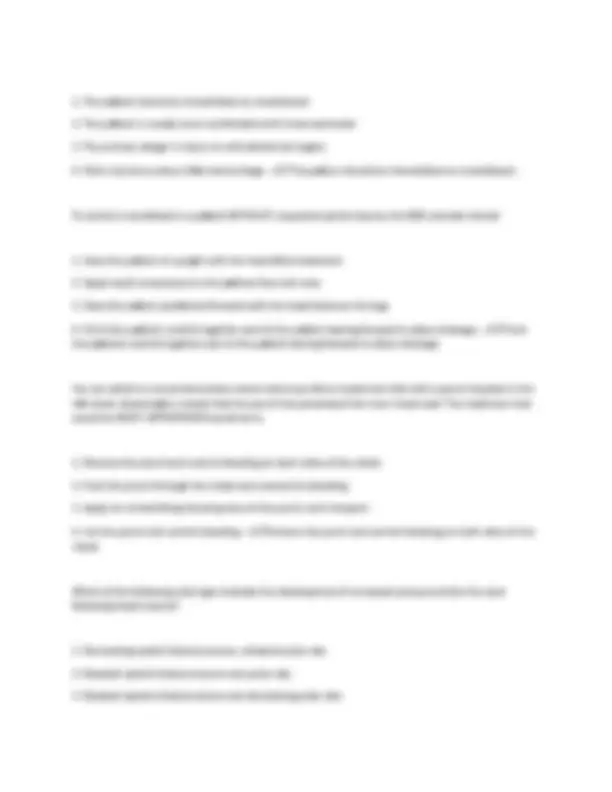





































Study with the several resources on Docsity

Earn points by helping other students or get them with a premium plan


Prepare for your exams
Study with the several resources on Docsity

Earn points to download
Earn points by helping other students or get them with a premium plan
Community
Ask the community for help and clear up your study doubts
Discover the best universities in your country according to Docsity users
Free resources
Download our free guides on studying techniques, anxiety management strategies, and thesis advice from Docsity tutors
Providing care within the scope of practice would be considered behavior in accordance with: 1. The sovereign immunity doctrine 2. Approved protocols 3. Professional Standards 4. Institutional Standards - ✔✔Professional Standards As you lift a patient into the rear of the ambulance, a reporter recognizes the patient as a State Senator. Immediately the press demands to be told what has happened to the senator. You Should: 1. Advise the press that you are unable to comment 2. Deny the patient is the Senator 3. Tell the press your diagnosis 4. Advise the press to contact the Senator's family - ✔✔Advise the press that you are unable to comment If the patient care protocols have been revised, it is the EMS providers responsibility to 1. Attend in-service training with the agency medical director to become familiar with the new protocols 2. Continue to use the old protocols because they are already familiar
Typology: Exams
1 / 43

This page cannot be seen from the preview
Don't miss anything!




































Providing care within the scope of practice would be considered behavior in accordance with:
All of the following are part of the respiratory system EXCEPT the:
When ventilations are being performed on a victim who is suspected of having a spinal injury, the victims neck should be kept in a
In caring for a non-breathing patient with a stoma or tracheotomy tube; the EMS provider must